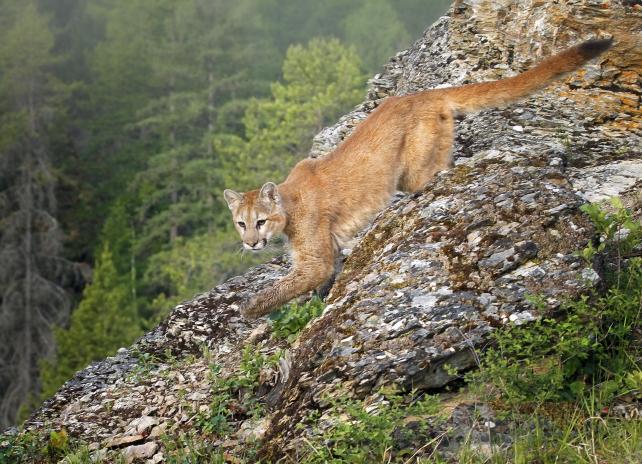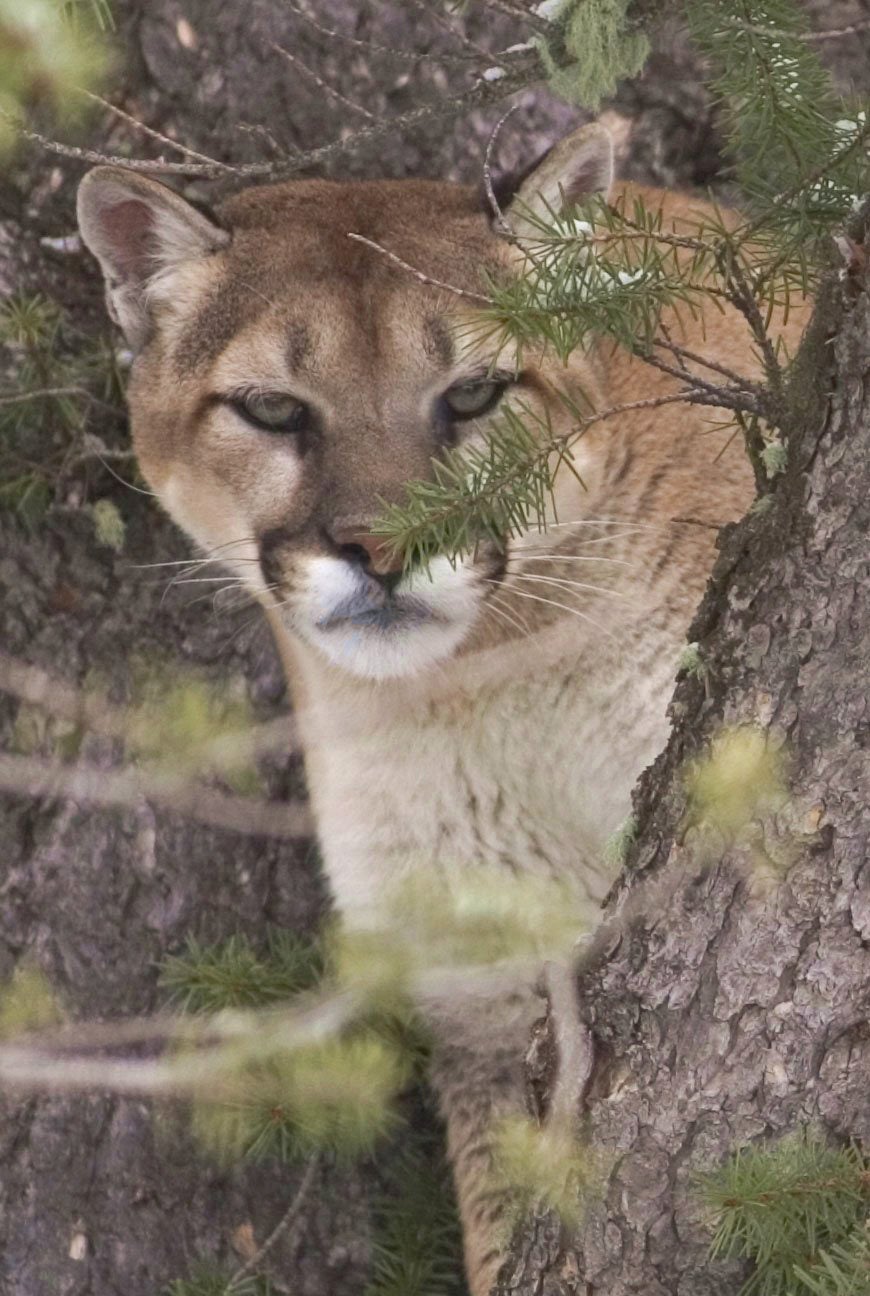
Mountain Lions in Wyoming
Mountain lions, the most elusive of the large carnivore species in Wyoming, are found statewide but rarely seen. Learn about mountain lion hunting regulations, how the Wyoming Game and Fish Department monitors mountain lion populations, how to avoid conflicts with lions and much more.
Staying safe in mountain lion country
- Reduce your risk by not recreating alone: Groups of people make plenty of noise, reducing the chance of surprising a mountain lion.
- Never approach a mountain lion: All wild animals are unpredictable. Most mountain lions try to avoid confrontation. Give them a way to escape.
- Stay calm: If you encounter a lion, talk in a calm and firm manner. Move away slowly. Make yourself look bigger by raising your arms. Don't run. Sudden movement may stimulate a lion's instinct to attack.
- Keep a close eye on children playing outdoors: Try to have children inside between dusk and dawn. The buddy system works well.
- Don't feed wildlife: This is one of the key components to reducing the risk of mountain lions. Feeding wildlife may attract animals like mountain lions to your residence.
- Bring pets inside at night: Roaming pets are an easy food source for mountain lions. If you leave your pet outside, keep it in a kennel with a secure top. Do not feed pets outside. This can attract mountain lions and their prey.
- Keep the perimeter of your house well-lit at night: Keeping the perimeter well-lit, especially along long walkways, can make lions visible and discourage activity.
- Be aware of areas with thick cover: During the day, mountain lions try to find cool, quiet spaces to bed down. Be aware of these areas.
- Be aware of your surroundings: It is critical to immediately report sightings of mountain lions to your local Game and Fish personnel.
View more information about staying safe in mountain lion country with these mountain lion safety tips.

About mountain lions in Wyoming
The most elusive of the large carnivore species in Wyoming, mountain lions are found statewide, but are rarely seen. Their cryptic behavior is a result of the successful stalk and ambush predation strategy they use to survive. Mountain lions' primary food source are deer and elk, although based on research conducted in Wyoming they eat a variety of mammals including porcupines, raccoons, beavers and coyotes.
Phylum: Chordata
Class: Mammalia
Order: Carnivora
Family: Felidae
Subfamily: Felinae
Genus: Puma
Species: concolor



How do we monitor mountain lions?
Data obtained from mountain lions during hunting seasons provide insight into local population dynamics. Research conducted in Wyoming serves as the foundation for mountain lion management and over the past decade personnel from the Large Carnivore Section have studied multiple aspects of mountain lion ecology throughout Wyoming, providing insight into food habits, movements, habitat selection and predation in different ecosystems where mountain lions reside. With the aid of trained hounds, personnel are able to fit mountain lions with tracking collars to provide fine-scale evaluation of the movements of these elusive carnivores.
Regulations & Hunting Information
Prepare for the hunt of a lifetime by utilizing the mortality limit hotline to confirm the status of your hunt area while abiding by the regulations set for the current season. Hunters can take the Mountain Lion Education and Identification Course for free to improve their ability to distinguish male from female mountain lions.
Regulations
Chapter 42 regulation establishes hunting season dates, mortality limits, limitations, archery seasons and hunt area descriptions for mountain lion hunting seasons.
Mortality Limit Hotline
Call 1-800-264-1280 to determine the status of hunt area closures. It is the hunter's responsibility to confirm the status of the hunt area. The hotline is available twenty-four hours a day.
